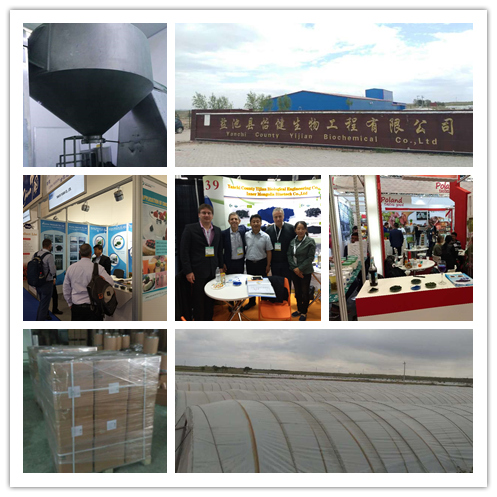The main types of flowers and insect pests in autumn are: leaf spot, black spot, anthracnose, blight, powdery mildew, scale insects, aphids, thrips, longhorned beetles, wood-moth moth, whitefly, spotted fly, and mite ( Red spiders, crickets, nematodes, etc. Leaf spot mainly harmed camellia, sweet-scented osmanthus, eucalyptus, orchid, pineapple, Podocarpus, San Weikui, etc., generally the diseased leaf rate was 15% to 30%, and the weight was more than 50%. Black spot mainly damage rose, rose, chrysanthemum, etc., flowers are more common victims, its damage rate is generally 20% to 40%. Anthracnose species are many species of flowers, and the common victim flowers are orchids, evergreen, camellia, milan, olivia, rubber tree, white orchid, clivia, bamboo grass, palmaceae flowers and so on. The damage rate of flower leaves is 10% to 30%, and serious is above 90%. In addition, powdery mildew is responsible for crape myrtle, peony, etc., wilt disease damage palm flowers (seedling period), chrysanthemum and so on. Scale insects are the most common insect pests and often cause damage to cycads, streaky awns, white orchids, sweet-scented osmanthus, camellia, mirabelle, olivia, eucalyptus, eucalyptus, Fujian tea, and brown bamboo. In the environment where the planting density is high and the shade is high, the weight will occur. If the control is not timely, it may cause fallen leaves, dead branches, or even plant death. There are many types of flowers that are damaged by mites. Common types include citrus, eucalyptus, marigold, rose, rose, cycad, and bamboo. Autumn is the peak season for fleas and must be used to prevent and treat pesticides in time. In addition, the hummer often injures the leafhoppers. The long-horned beetles and wood-worm moths are damaged on the coarse stems of eucalyptus, imitated maple, and cycad after transplanting, and the damage rate is generally 10% to 40%. The whitefly, aphid, and spotted fly mainly damage chrysanthemums, peony, and azaleas. The occurrence of nematodes is more common and difficult to detect. The main target species are evergreen, palmaceae, and chrysanthemum. The prevention and control of flower diseases and pests should be based on prevention, and it is particularly worth noting how to avoid pollution caused by the pollution of the water source. In addition, it is necessary to prescribe the right medicine and prevent it in time. 1. In the flower field, we must promptly clean up the sick leaves and leaves, use a clean water source to water the flowers, and reasonably arrange the planting layout of the flower varieties in the field so as to reduce the repeated infection and spread of the disease and insect sources. 2. The right medicine, timely medication control. Disease prevention and treatment: leaf spot, black spot can use thiophanate, carbendazim, mancozeb, copper oxychloride and other pesticides for prevention and control, anthrax use protection, so that 100 grams or on behalf of Sen Zinc and other control, powdery mildew With extermination Weiwei, rubber suspension, triadimefon and other prevention and treatment. Pest control: Scale insects should be selected for speed culling, omethoate prevention and control, fleas with carbendazim, konjac, amitraz and other control, pupa, whitefly with imidacloprid, rice planthopper, Wanling, etc. Liriomyza was used for prevention and treatment with dimehypo and badan, while nematodes were treated with carbofuran and miral. In the event of drilling pests, pesticides can be used in addition to spraying pesticides on the surface.
This classification summarizes the Organic Chlorella Powder produced by our own factory in northwestern of China .
We have advanced equipment and strict quality control system to ensure the quality and production.

The products under the classification are:
1. Organic Chlorella Powder .
Various parameter specifications of our product:
Naturland Certified ; CERES certified .
EU & NOP standard ; Kosher & Halal Available .
Low heavy metals & Micro Contents , Low & Stable PAH4 Level ,
PAH4 value is less than 10 ppb .Low microorganismsNon-Irradiation ,
Non GMO , Gluten Free , Allergen Free , Pesticides Free .
Own Factory : Manufacture in northwest of China . Legitimacy , Regularity , Cultural .
Own Lab : Quality control and Product development . Strictly , Creativity , Responsibility .

About Company
Yanchi County Yijian Biotechnol Co.,Ltd
was founded in Dec 2012 ,
by Mr. Dezhi Zhang ,
the legal representative of the company .
Company registered capital is 10 million RMB .
The main business sectors are culture , processing , internal sales , import and export trade of Organic Spirulina and organic chlorella products .
Yijian is known globally as one of the major suppliers of microalgae products across the world .
Annual production rate is 600 Mt .
Average annual sales income is around 5 million dollar .
Organic Chlorella Powder
Organic Chlorella Powder,Pure Organic Chlorella Powder,Organic Feed Grade Chlorella Powder,Pure Natural Chlorella Powder
YANCHI YI JIAN BIOLOGICAL PROJECT CO.,LTD , http://www.spirulina-yj.com

